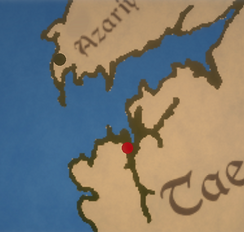
Playable Races in Marin
(With permission from Admin and Moderators)
The World of Marin has a handful of varied races, and this is where they’re listed. Everything that can be listed about these races should be in this document. If there is something reasonable that isn’t on this document, message a Moderator or an Admin! We’ll add it as soon as we can. We take all emboldened text as suggestions. Message Sleem for any ideas, questions, or suggestions.
As always, enjoy. The Marin Staff.
Disclaimer:
Races other than Men are fairly rare, meaning that their presence in the story will drastically change the story. Being a nonhuman does not equal an interesting character. At default, commoners in more rural communities are superstitious of outsiders, let alone “subhumans”. Commoners in more urban communities may interact with “subhumans”, but discriminate or show violence against them out of fear. In layman’s terms, you are gaining another statistic that drastically lowers your overall charisma. Unless you are truly interested in playing a wholehearted subhuman, you will not have fun. There are many opportunities to fit in, but make no mistake subhuman, this is not your world. This is the World of Marin.

Elves
All Elves are from the West, In truth, the pathway is near unnavigable, shrowned in the Western sea of wind, mist and ice. A few sailor's guilds in the city of Azaria-Amaranth know the lucrative routes, finding wild sums of cash upon return from the mainland. Elves serve many purposes in Azaryan society, from simple servants of wealthy merchants to exotic wards of the upper echelon of Azaryan society. More often than not, female elves found in the hands of Azaryan highborns produce Azaryan lowborn children. Half-elves, like all halflings (Half subhuman-human mix) in Marin, can not produce offspring and, as such, travel the world instead of finding love. Both societies shun them as outcasts but are significantly better at blending into urban areas.
The Coast of Tears is a windy, cold, and miserable series of towns of land on a delta of Northern Taemar. The majority of half-elves that can manage an escape from Azarya don’t make it very far on the sparse Drygrass Plains. It doesn’t make it any easier that the Azaryan slaver hulks crash most frequently during the Autumn into Winter when the seas are least kind, and the weather is brutal. Shipwreck survivors, half-elf refugees, and escaped full-blooded elves all live in relative harmony in the only Elven colony in Marin, unnamed in the current canon.
Life there is primarily subterranean, as a complex series of caves exist on the banks of the unnamed frozen delta. They are notably lit by large, bioluminescent moss and fungus. Multiple Elvish septs are there, although their strength is all but negligible, and they consider themselves mostly cadet branches of famous Elvish families back home. As much their sigils are filled with foreign and unrecognisable animals, and some animals are native to the area, like blue lobsters and clams. Because the Taemarian military and Iron Guard to not have the foothold or strength to scan the northern reaches of the Drygrass Plains regularly, the Elves live in relative peace, more worried about weather and wildlife then any attacks from Men.

Location of the Towns on the Frozen River Delta
Shifters
Shifters weren’t always known to be a menace to society, as they used to exist hidden away in the Marin forests, far from the eyes of human society. They cherished their solitude amongst their kind, finding solace among the wildlife, which offered companionship far more genuine than that of humans—who they viewed as driven by greed and a relentless thirst for power. Shifters never had a real understanding of what humans were like, only believing the words of their elders and the ideas that were planted in their minds throughout their childhood. Because of this, they never bothered to learn about their traditions, politics, culture or livelihoods. In a world where countless clans thrived, each one comprised of fifteen families, the air buzzed with an ancient tradition. Twice a year, these clans would gather, united by one singular purpose: to find a lover who could be their partner in creating the next generation. For many, the ideal mate could transform into at least two of the same animals they did, forming a deeper bond rooted in shared abilities. However, not all shifters embraced this way of life. The isolation from human society weighed heavily on those yearning for connection beyond the confines of their clans. Many chose to break free, leaving their families behind to experience the world of humans. This exodus birthed a new kind of rogue—individuals unaware of, or indifferent to, the laws that governed humanity. It was the rogues who brought attention to their existence, leading to their kind’s eventual pursuit. Their once peaceful lives were suddenly ambushed when the tribes were systematically hunted down, one by one, in a relentless pursuit that echoed through the lands. These hunters, a sinister fusion of human and otherworldly traits, possessed an unnerving combination of blinding speed, immense strength, and an uncanny healing ability that distinctly separated them from ordinary mortals. The Waikua Shifters speculated that these formidable beings had been infused with dark, magical powers that amplified their lethal prowess in tracking and eliminating their quarry. As time wore on, the hunters succeeded in decimating most of the shifter populations, driving them to the brink of extinction and rendering them an endangered race. The surviving shifters faced an unprecedented reality—forced to navigate life in isolation, far removed from the bonds of their tribes for the very first time. Fast forward approximately twenty-five years, the world began to notice the gradual emergence of shifters who had cautiously reintroduced themselves to society.